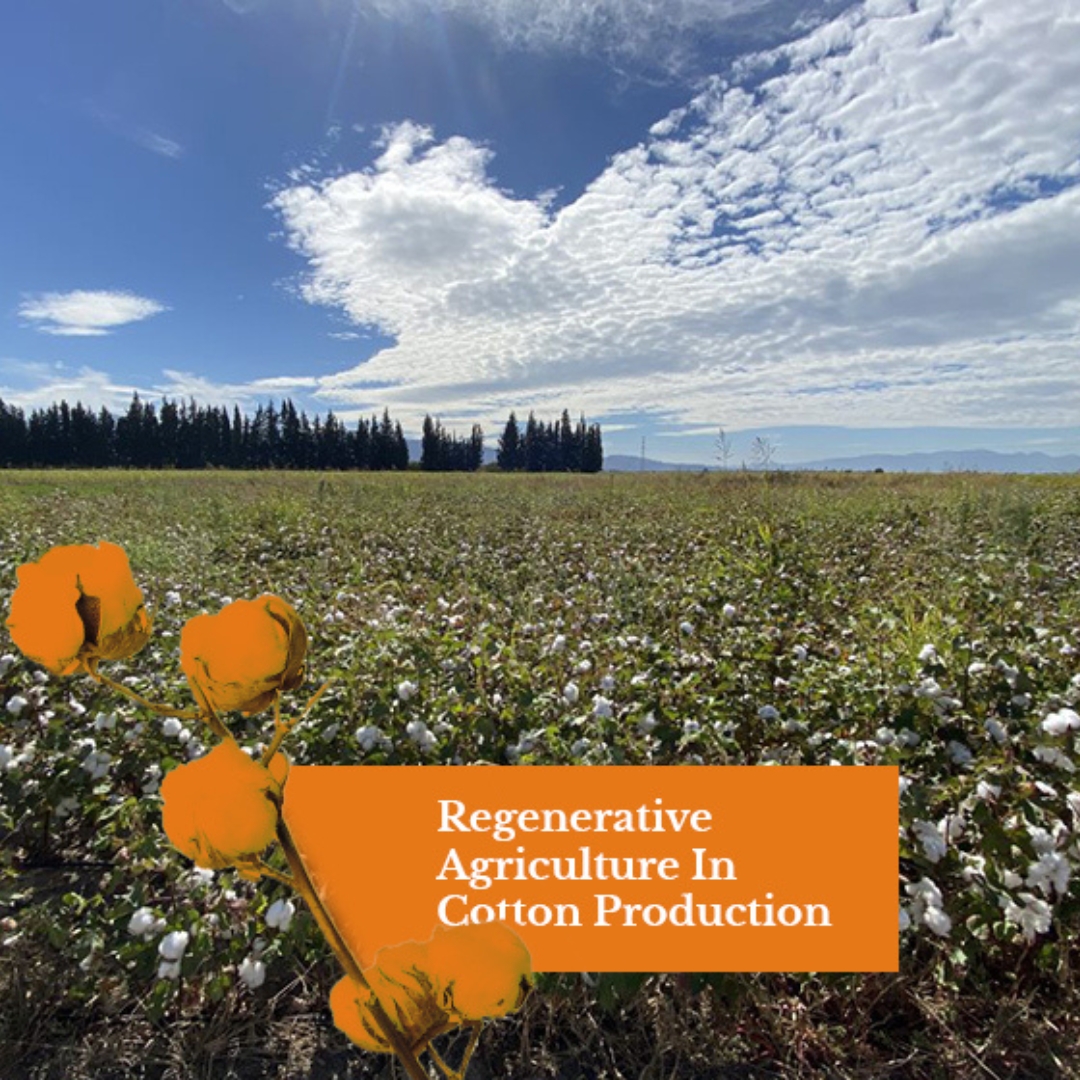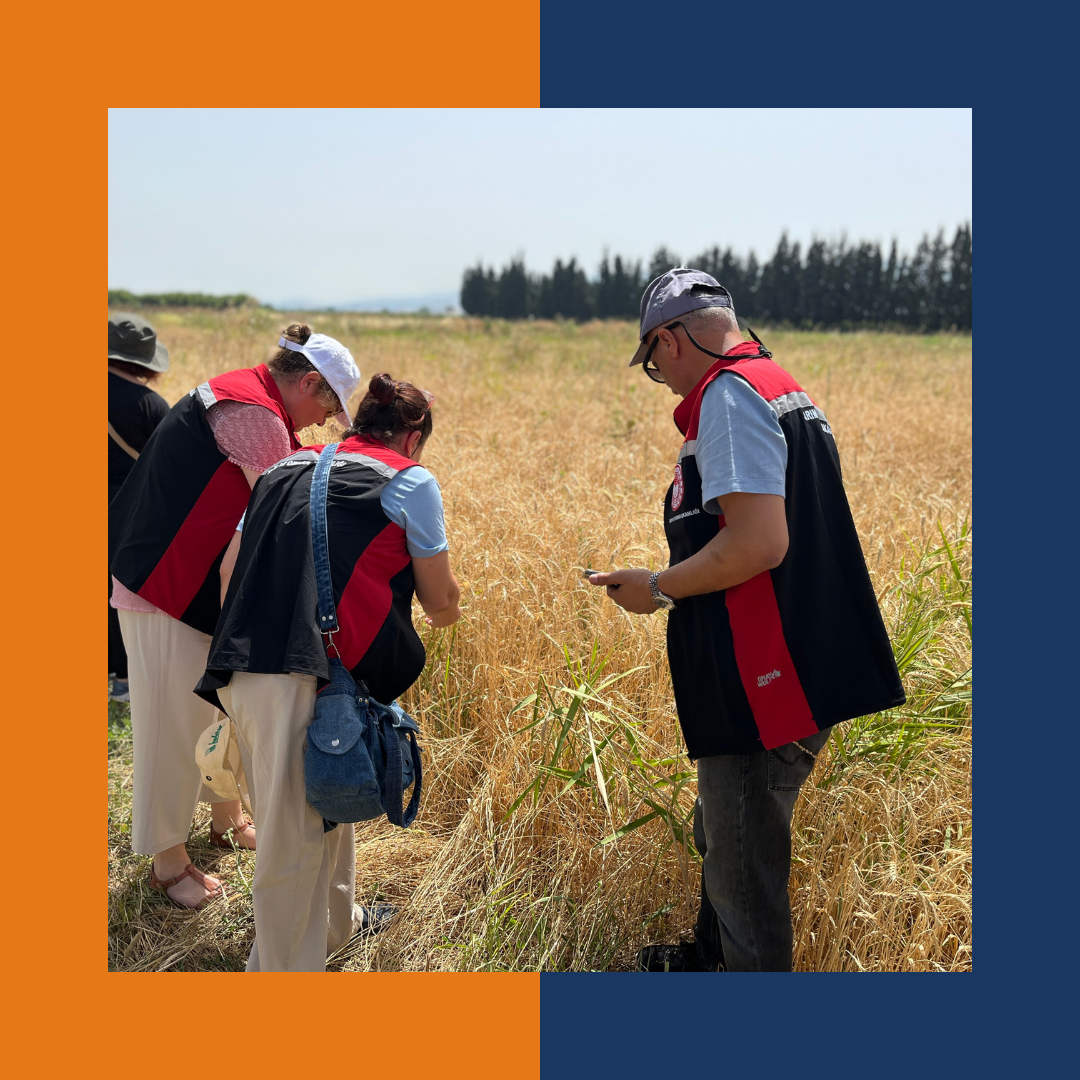Egedeniz’s history of being in the textile industry goes back to 1993. We have been aware of the effect of the textile industry on Mother Earth throughout these years and we couldn’t be apathetic regarding our planet’s health and the future of the next generations.
As there is no planet B, making awareness regarding sustainability and a holistic approach to regenerative practices is our responsibility.
We’re at a critical moment in human history, climate change is the main headline of global news, the world’s rivers are drying up in drought and heat and the annual rainfall rate is decreasing dramatically!
The fact is that a tremendous amount of carbon is in the atmosphere since 1750 when the industrial revolution began and the only goal that makes sense for humanity is a drawdown, a year-to-year reduction in carbon in the upper atmosphere.
In this article, you will read about regenerative agriculture practices for cotton production and why adopting regenerative agriculture can be the only way to protect mother earth.
What is Regenerative Agriculture?
It’s important to know that there is no specific definition for regenerative agriculture, it is a holistic approach to farming that focuses on building soil health, increasing biodiversity, and improving overall ecosystem function. In the context of cotton production, regenerative agriculture practices may include things like cover cropping, reduced tillage, cover crops, crop rotation, and the integration of livestock.
Soil Health Matters!
The fate of water and carbon are tied to soil organic matter, when we damage soils, we give off carbon, and it goes back to the atmosphere. Healthy soils absorb water and carbon dioxide, but when we destroy soil, it releases water and carbon dioxide. This dries out the soil and turns it into dust and the result is desertification.
From another point of view, when the soil is bare and dry, the heat comes off the soil, and as a result, huge vortexes of hot air go out, and it pushes the rain clouds away instead of attracting them. So, drought is what happens next!
The solution is right under our feet, we call it soil, earth, or ground, and due to its vast scale and its ability to sequester immense quantities of greenhouse gasses, it could be just the only thing that can balance our today’s critical climate change, replenish our water supplies, and feed the world.
Soil, the plant, and the climate are connected.
Regenerative cotton farming is a recent trend and is gaining more popularity as they try to make cotton farming more sustainable. This can include:
- Using non-synthetic fertilizers like compost or natural minerals to nourish the soil.
Using non-synthetic fertilizers like compost or natural minerals is a key aspect of regenerative agriculture in cotton production. This approach differs from traditional cotton farming, which often relies heavily on synthetic fertilizers to boost crop yields.
Compost is made from organic materials like yard waste, food scraps, and livestock manure, and is rich in nutrients that are beneficial for plants. When applied to the soil, compost can help to improve soil structure, increase water-holding capacity, and promote the growth of beneficial microorganisms.
Similarly, natural minerals like rock dust, basalt, and green sand can also be used as fertilizer. These minerals are rich in a wide variety of micronutrients that are essential for plant growth and can help to improve soil health over time.
The use of non-synthetic fertilizers is not only better for the environment and better for soil health, but it can also result in crops that are more resistant to disease and pests, which can lead to increased yields and profits for farmers.
- Crop rotation helps maintain soil health and reduce pest pressure
Crop rotation is an essential aspect of regenerative agriculture in cotton production. Crop rotation is the practice of growing different crops in a specific field on a cyclical basis.
Crop rotation and growing different crop species can help in adding organic matter to the soil, improving soil structure, and increasing water-holding capacity
Crop rotation has a number of benefits for maintaining soil health and reducing pest pressure. Some of these benefits include:
Adding Organic Matter: Growing different crop species can help.
- Minimizing the use of chemicals and pesticides
Minimizing the use of chemicals and pesticides is another key aspect of regenerative agriculture in cotton production. Traditional cotton farming often relies heavily on the use of synthetic pesticides and herbicides to control pests and weeds, but these chemicals can have a wide range of negative impacts on the environment and human health. Regenerative agriculture, on the other hand, employs a variety of techniques to minimize the use of chemicals and pesticides.
- Using organic farming methods that focus on building soil health and biodiversity
Organic farming methods can help improve soil health, increase biodiversity, and reduce synthetic chemicals and pesticides. This can lead to more sustainable and resilient cotton farming systems that are better for the environment and better for farmers and farm workers
- Cover crops:
Intercropping involves growing multiple crops in the same field at the same time. In the context of cotton production, this could mean planting cotton alongside other crops like legumes, cereals, or vegetables. Intercropping can help to improve soil health, increase biodiversity, and reduce pest pressure. Additionally, It can also improve water use efficiency and boost overall yields.
- Incorporating Livestock
Livestock can provide natural pest control by eating pests and insects and livestock manure can be used as a fertilizer, which can help to improve soil health and increase crop yields.
Livestock can also provide a source of income for farmers, which can help to diversify farm income and make the farm more resilient.
All these practices can have different results when it comes to soil health indicators, based on the textile exchange 2022 Colorado conference, the same practices applied in Brazil and Australia derived completely different results, so adopting regenerative agriculture needs running projects and finding the best solution based on the geographical location and organic matter level of the soil.
You can read about Egedeniz textile’s regenerative agriculture projects for both organic cotton and hemp products that are going on with the cooperation of the Ministry of Agriculture and Forestry Türkiye.

![In today's world of sustainable fashion, many brands struggle with true transparency within their supply chains. At Egedeniz Textile, we take immense pride in partnering with like-minded businesses that prioritize ethical and sustainable practices. One such long-term partner is Toad & Co, a leading sustainable fashion brand from the USA. Our relationship with Toad & Co spans over 20 years, and we're grateful for their commitment to visiting us regularly. This dedication to on-site visits demonstrates their genuine interest in understanding our processes and ensuring alignment with their sustainability values. Last year, we had the pleasure of welcoming Joanna, Vice President of Toad & Co, to Izmir, Turkey. During her visit, Joanna sat down with our General Manager, Özgü Yalçın, for an insightful conversation. The interview, published on Toad & Co's website, delves into Özgü's journey with Egedeniz, our longstanding partnership, and the driving force behind her dedication to sustainability. We invite you to read the full interview [Click here to read the interview.] and learn more about Egedeniz's commitment to sustainable textile production.](https://egedeniztextile.com/wp-content/uploads/2024/07/Egedeniz-Toad-and-CO.jpg)

